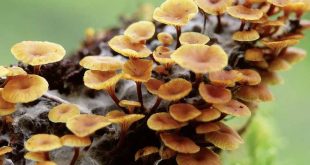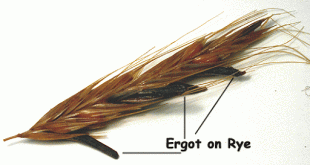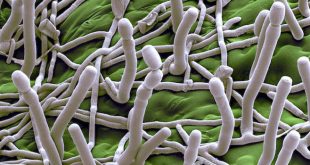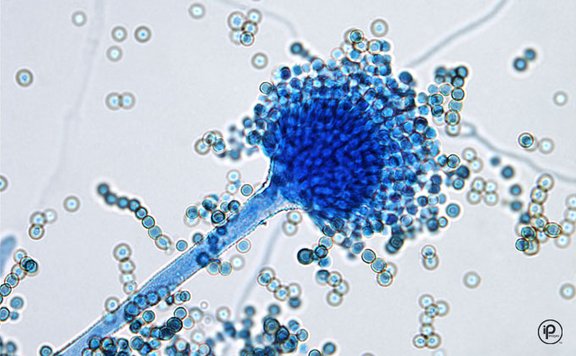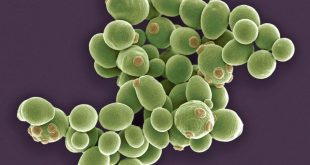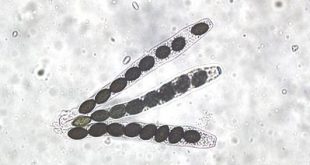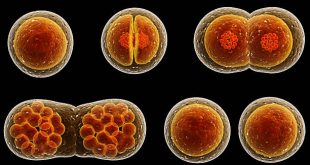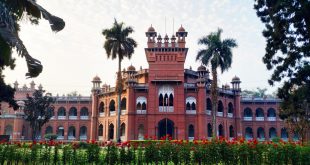Agaricales is an order of fungi in the class Agaricomycetes (phylum Basidiomycota, kingdom Fungi). It is one of the most diverse orders of the phylum Basidiomycota. Traditionally, agarics were classified based on the presence of gills (thin sheets of spore-bearing cells, or basidia) and mushroom-shaped fruiting bodies. Some other conspicuous …
Read More »Monthly Archives: April 2020
Clavicipitales: Ergot by Claviceps Purpurea
Claviceps are member of the pyrenomycetes, fungi which are referred when they form perithecial ascocarp. They are important as the parasites of many endophytes in their life as discussed below- Classification Class: Ascomycetes Sub-class: Hymenomycetidae I, Hymenomycetidae II. Order: Hypocreales Family: Clavicipitaceae Genus: Claviceps Vegetative structure The intercellular hyphae are …
Read More »Erysiphales: Genera Causing Powdery Mildews
One of the important fungi which influence human life belongs to the order Erysiphales. This fungi causes powdery mildew disease to plants, so named as the infected plant appear to be covered by a white, powdery material. This is none other than due to the powdery conidia, which are blown …
Read More »Eurotiales: Perfect & Imperfect Stages of Aspergilli & Penicilli
Aspergillus Why do some sexual stages lack active antheridium? What are the conditions favouring sexual reproduction? Good to know The mycelial or ascospore stages are the ones that overwinter in the life cycle. Classification Phylum: Ascomycota (Filamentous ascomyecetes) Class: Ascomycetes Order: Eurotiales Family: Trichocomaceae Genus: Aspergillus Species: A. niger, A. …
Read More »Endomycetales with Emphasis on Saccharomycetaceae
Endomycetales is an order of ascomycetous fungi having ascus (pl. asci) developing from a zygote or single cell. One of the families of Endomycetales is Saccharomycetaceae and the members of this family are commonly known as Yeasts. Systematic Position Phylum Ascomycota Get Free Netflix Now Best safe and secure cloud …
Read More »Basidiomycetes: Characteristics & Classification
The fungi comprising the phylum Basidiomycota commonly are known as basidiomycetes. It is a large phylum that includes forms commonly known as mushrooms, boletes, puffballs, earthstars, stinkhorns, birds-nest fungi, jelly fungi, bracket or shelf fungi, and rust and smut fungi. Salient features Habit and habitat Both parasite and saprophytic. Some …
Read More »Ascomycetes: An Introduction to the Sac Fungi
The phylum Ascomycota (colloquially called ascomycetes) is by far the largest group of fungi, estimated to include more than 32000 described species in 3400 genera (Kirk et al., 2001). It is assumed that the majority of ascomycetes has yet to be discovered, and the total number of species may well …
Read More »Cell Division: Types, Stages & Processes
All living things, as well as human beings, are made up of cells. Some organisms have only one cell during their whole lifespan by which they carry out all the physiological processes they require to survive. These are unicellular organisms. For instance, bacteria, yeast, etc. In contrast, there are also …
Read More »কার্জন হলের রত্নরা
ঢাকা বিশ্ববিদ্যালয়ের কার্জন হল, এই নামটার সাথে জড়িয়ে আছে না বলা অনেক স্মৃতি। যখনই ঢাকা শহরের এই যন্ত্রচালিত জীবন অসহ্য মনে হয়, অসহ্য মনে হয় যানযট, সবুজের জন্য খাঁ খাঁ করে মন তখনই এই কার্জনহলে এসে নিজেকে তৃপ্ত মনে হয়। যারা ক্যাম্পাসে সারাদিনই ক্লাস, ল্যাব, মিড, প্রেজেন্টেশন নিয়ে দৌড়ে ক্লান্ত …
Read More »Some Basic Concept of Angiosperm Taxonomy: Essential To Know
Plants are closely associated with human. If we want to use plants for the greatest behoofs for human life and their next generation, it is obligate to perceive about plants and their types. Angiosperms represents the largest as well as the most successful group of plants within the plant kingdom. …
Read More » Plantlet The Blogging Platform of Department of Botany, University of Dhaka
Plantlet The Blogging Platform of Department of Botany, University of Dhaka
